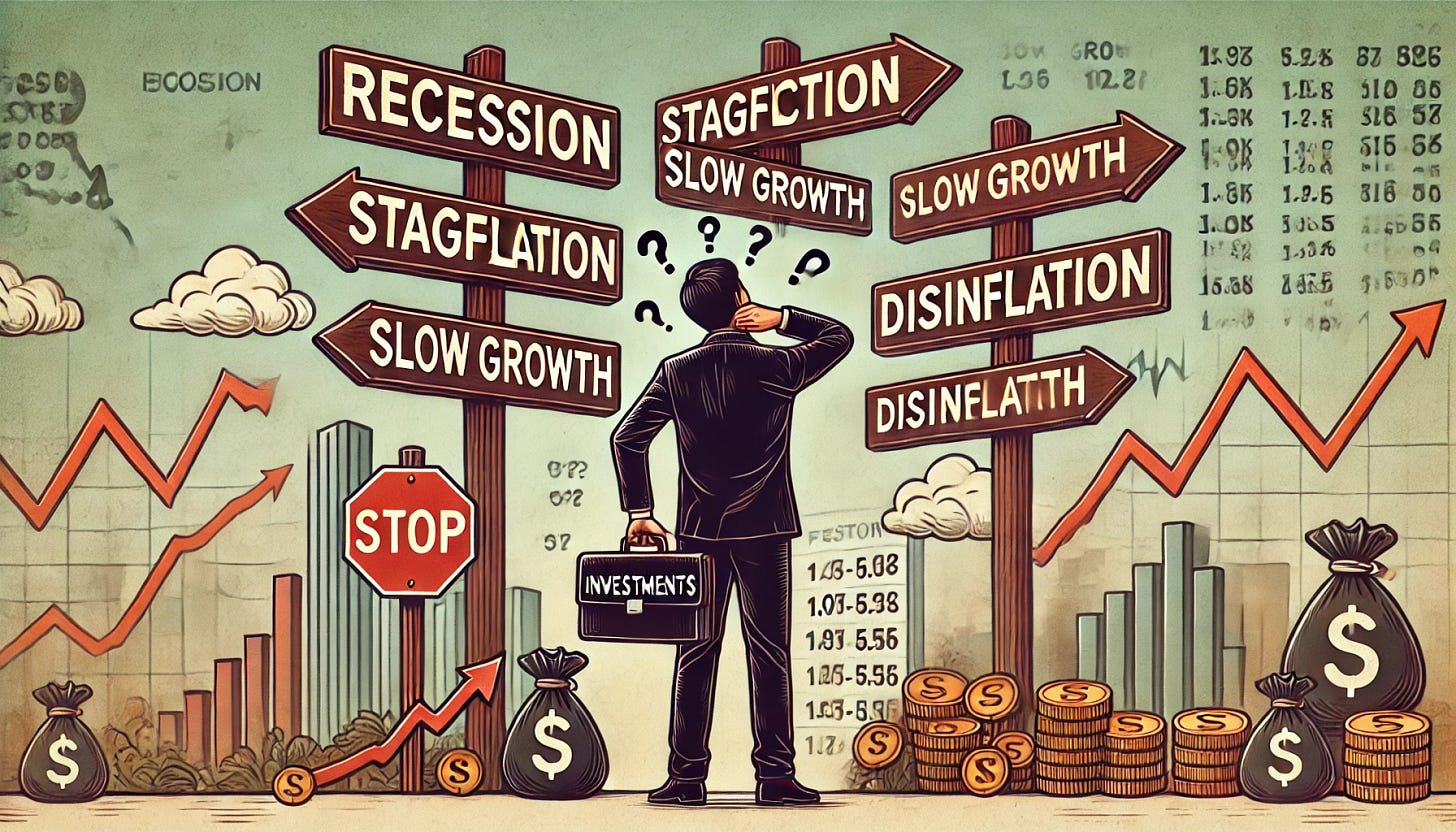Recession, Stagflation or Just Slow Growth? How to Invest Amid Uncertainty
Fed Chair Jerome Powell recently described tariff-driven inflation as ‘transitory’. That word set off alarms across the investing world. After all, Powell used the same term during the post-COVID inflation surge—only for inflation to persist far longer than expected. Once bitten, twice shy. Investors are now more wary than ever about lingering inflation risks, especially when ‘transitory’ is mentioned again.
But beyond the sound bite, Powell also acknowledged that the labor market is no longer overheated. The Fed projects GDP growth of just 1.7%, pointing to a clear economic slowdown.
Still, the Fed held rates steady at 4.25% to 4.5%, as expected. Powell reiterated his confidence in bringing inflation down to the 2% target, though two rate cuts are projected by year-end—possibly bringing rates to 3.75% to 4%. That’s still relatively high, signaling that inflation remains a concern.
Four Potential Economic Scenarios
So where do we go from here?
Scenario 1: Recession
If economic growth contracts enough, the NBER may officially declare a recession. Inflation would likely fall, prompting the Fed to cut rates more aggressively.
Scenario 2: Stagflation
This is the worst-case scenario—economic contraction with persistent inflation. It ties the Fed’s hands: cut rates and risk higher inflation, or hike rates and crush growth further.
Scenario 3: Sluggish Growth + Sticky Inflation
Growth slows but stays positive, while inflation remains slightly above target (say 2.5–3.5%). Interest rates stay elevated.
Scenario 4: Sluggish Growth + Disinflation
Inflation continues to drift lower while growth remains weak. In this case, the Fed has room to cut rates, helping both bonds and quality growth stocks.
So which scenario will play out?
Honestly, it’s hard to say with any reliable accuracy—and each one favors different types of investments.
If we get a recession, the Fed will likely cut rates aggressively, boosting bond prices. Growth stocks may suffer, while defensive sectors like consumer staples, utilities, and healthcare tend to hold up better.
If we end up with stagflation instead, bonds may not perform well since rates would stay elevated, but inflation hedges like gold and commodities could do better.
In a sluggish growth and sticky inflation scenario bonds still won’t shine, and while some strong businesses may still grow, many others could struggle under slow demand and higher costs.
The key point is that positioning needs to happen before the scenario unfolds. Markets are forward-looking—stocks often crash before a recession is official, and bond prices rally early as investors move to safety. By the time the news confirms a recession, bonds have likely already risen, and that might actually be the time to start looking at stocks again.
But the risk of positioning too early is just as real—you could prepare for the wrong scenario and end up worse off.
That’s why investing based on predictions is tough, especially in a world where policy unpredictability—like potential moves by Trump—can throw forecasts off course.
Ultimately, it depends on your investment approach. If you’re doing a diversified 60-40 index portfolio, you probably don’t need to worry much. That’s the beauty of disciplined indexing: you stay the course, no matter the environment.
But if you’re more discretionary and want to avoid large drawdowns, it’s sensible to tilt toward a more defensive stance. Sure, if the economy surprises on the upside, you may underperform—but it's the downside you’re protecting against.
More defensive means:
Reduce exposure to speculative, story-driven stocks, especially loss-making, cash-burning names.
Avoid high-yield bonds, which are riskier and may suffer defaults in a slowdown.
Hold short-term investment-grade government or corporate bonds, which offer stability and less rate sensitivity.
Focus on reliable dividend stocks in sectors like consumer staples, healthcare, and utilities—businesses that can maintain earnings and payouts through cycles.
Favor high-quality growth stocks with strong cash flow and pricing power.
Consider a small allocation to commodities or gold as an inflation hedge.
Bottom Line: Prediction is Risky, Protection is Practical
I wish I could tell you with certainty what’s coming next. That would be sexy—and probably get more clicks. But sensationalism isn’t sound investing. No one can predict the future with consistent accuracy. We might get it right once or twice, but not every time.
What we can do is assess the risks, decide what kind of investor we are, and choose whether to take more risk or protect what we have.




